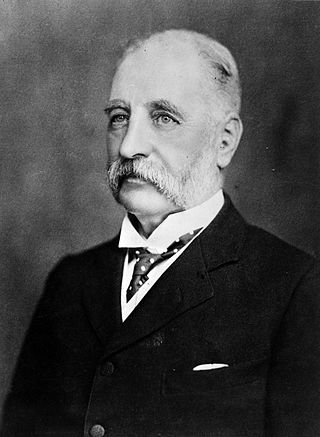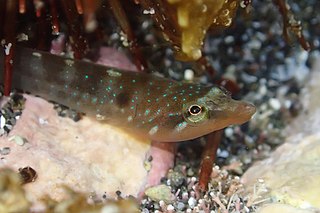Related Research Articles

Sir James Hector was a Scottish-New Zealand geologist, naturalist, and surgeon who accompanied the Palliser Expedition as a surgeon and geologist. He went on to have a lengthy career as a government employed man of science in New Zealand, and during this period he dominated the colony's scientific institutions in a way that no single person has since.
Richard Kenneth Dell was a New Zealand malacologist.

The Museum of New Zealand Te Papa Tongarewa is New Zealand's national museum and is located in Wellington. Usually known as Te Papa, it opened in 1998 after the merging of the National Museum of New Zealand and the National Art Gallery. An average of more than 1.1 million people visit every year, making it the 58th-most-visited art gallery in the world in 2023. Te Papa operates under a bicultural philosophy, and emphasises the living stories behind its cultural treasures.

The upland moa is an extinct species of moa that was endemic to New Zealand. It is a ratite, a grouping of flightless birds with no keel on the sternum. It was the last moa species to become extinct, vanishing around 1500 CE, and was predominantly found in alpine and sub-alpine environments.
John Andrew Frank Garrick was a New Zealand ichthyologist.

The New Zealand urchin clingfish is a clingfish. It is found around New Zealand wherever sea urchins are present. Its length is between 2 and 3 cm.

The New Zealand flathead, Bembrops morelandi, is a ray-finned fish of the family Bembropidae, found only around New Zealand, at depths between 365 and 395 m. Their length is up to 20 cm.
Eric Walmsley Heath is a New Zealand artist, illustrator, and cartoonist.
Richard John Killeen is a significant New Zealand painter, sculptor and digital artist.

The New Zealand bittern is an extinct and enigmatic species of heron in the family Ardeidae. It was endemic to New Zealand and was last recorded alive in the 1890s.

The Dominion Museum building on Mount Cook in Buckle Street Wellington completed in 1936 and superseded by Te Papa in 1998 was part of a war memorial complex including a Carillon and National War Memorial.

Hawaiian feather helmets, known as mahiole in the Hawaiian language, were worn with feather cloaks. These were symbols of the highest rank reserved for the men of the aliʻi, the chiefly class of Hawaii. There are examples of this traditional headgear in museums around the world. At least sixteen of these helmets were collected during the voyages of Captain Cook. These helmets are made from a woven frame structure decorated with bird feathers and are examples of fine featherwork techniques. One of these helmets was included in a painting of Cook's death by Johann Zoffany.
Jacqueline Nancy Mary Adams was a New Zealand botanical illustrator, botanical collector, phycologist and museum curator. Throughout her career (1943–1987), she worked at DSIR and later at the Dominion Museum in different roles as technician, artist and assistant curator of botany. Largely self-taught, Adams collected over 3300 botanical specimens in New Zealand, illustrated nearly forty publications on algae and other native plants, and authored numerous scientific publications. Her major work, Seaweeds of New Zealand – An Illustrated Guide, was published in 1994.

John Buchanan was a New Zealand botanist and scientific artist. He was a fellow of the Linnean Society.

Averil Margaret Lysaght was a New Zealand biologist, science historian and artist, best known for her scholarly work on Joseph Banks.

Frank Edward Clarke was a New Zealand ichthyologist and scientific illustrator. He discovered numerous fish species previously unknown to science and was the third most active describer of those new species in New Zealand from 1870 to 1905. Clarke was also an artist and a collection of his scientific illustrations is held at Museum of New Zealand Te Papa Tongarewa.
Paul Geoffrey Annear was a New Zealand contemporary jeweller.

Gordon Stephen Crook was a visual artist working across the fields of ceramics, textiles, printmaking, painting and drawing.

Pounamu is a term for several types of hard and durable stone found in the South Island of New Zealand. They are highly valued in New Zealand, and carvings made from pounamu play an important role in Māori culture.

The 1954 Chatham Islands expedition was a research expedition organised by George Knox of the University of Canterbury to explore the distribution of benthic and pelagic marine fauna living between the Chatham Islands / Rēkohu and the eastern coast of New Zealand.
References
- 1 2 3 4 5 Baker, Alan Noel; Garrick, John Andrew Frank (2013-01-01). "Obituary: John Munne Moreland (1921–2012)". Tuhinga: Records of the Museum of New Zealand Te Papa Tongarewa. 24: 1–4.
- ↑ "Mr John (Jock) Man Moreland (1921-2012)". Museum of New Zealand Te Papa Tongarewa. Retrieved 17 May 2022.